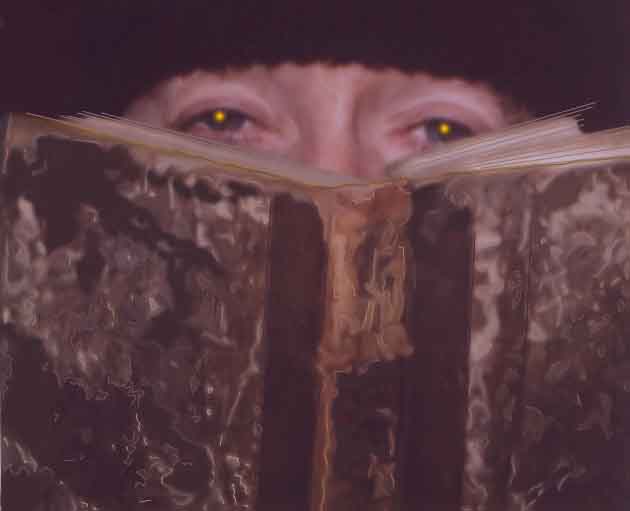









PAM HALL: THE LINE THAT BENDS, THE COIL THAT BINDS - THE WEST COAST WORK
Art Gallery Acadia University 17 January-February 23,1992
[First published in Toronto's Canadian Art, magazine, Summer, 1992, 68.]
Terry Fox dragged a metaphorical line across the country in a performance work with an object: an artificial leg. Since then, his run has become the standard measure of any activity which attempts to encompass the geography of Canada.
It is coincidence that both Fox and Hall began their projects by ceremoniously dipping an object in the waters off Newfoundland: Fox's leg, Hall's "Coil". Hall's object was made by hand-binding a large Newfoundland inshore fish net into a thick, tightly packed 110 foot rope. She has since photographed this Coil spread out in many sites, including the badlands of Alberta and the beaches of British Columbia. She installs the Coil and its packing in art galleries along with mixed media documentation of the outdoor installations, most recently at Acadia University Art Gallery in Nova Scotia. Viewers are provided with Hall's written statements and interpretive monologues, the musings of a special kind of tourist, if such a word can be made positive. Hall makes a quick trace in a "non-intrusive" way (as she puts it), and for a few moments the land becomes a large prop in the service of a quiet voice of feminism and environmentalism. Like Terry Fox, Hall has a larger agenda than a simple tour across the country, but unlike Fox, she presents her subject matter in a complex way.
There are a few common touches to her work. Poetic texts are hand-written across more-or-less prosaic collages of drawings, photographs and maps describing the Coil's location in outdoor installations. The texts "from line to nest/from east to west" and "one shelter harbours another/one harbour shelters another" use poetic conventions I think for wide appeal: the "romantic" quality of these texts helps the work speak to an audience bigger than the art crowd.
Hall calls the coil "her" and in some of the documentation includes images of a coil contraceptive, an IUD. The designation of the large net-coil as "female" connects with references to boats, the ocean, and other things in vernacular Newfoundland speech. I think Hall's identification of the Coil with a "coil" contraceptive is the most powerful image in the exhibition. It breaks up - problematises - the tired binary identification of male/female, rapist/raped, despoiler/despoiled which is so often used by environmentalists to characterize human intervention on the land. "Concealed in the belly/revealed on the land" says one of Hall's texts, a line which folds the problem of our relationship to the environment over on itself: it is our fecundity which destroys the environment, our births which kill.
The work of Marlene Creates is worth mentioning in a discussion of Hall's installations. Creates, a fellow Newfoundlander, once documented drapery she made with large sheets of paper put under and over the standing stones of Europe. Between them, Hall and Creates form a subset of Newfoundland art which builds on a tradition of art documentation of land projects, an international "tradition" barely thirty years old (but nevertheless old enough in media years for its artistic copyrights to have thoroughly run out). This second generation of land artists often makes "interventions" in the land which seem barely to "intervene".
Earlier land artists like Robert Smithson, Christo, Richard Long, Dennis Oppenheim and Michael Heizer were usually concerned with an imposition, sometimes of gigantic proportions, on the land. Smithson's Spiral Jetty has long since sunk into Utah's Great Salt Lake, overwhelmed by water. I think Hall would rather reconcile herself to the elements than challenge them with a monument.

|
|